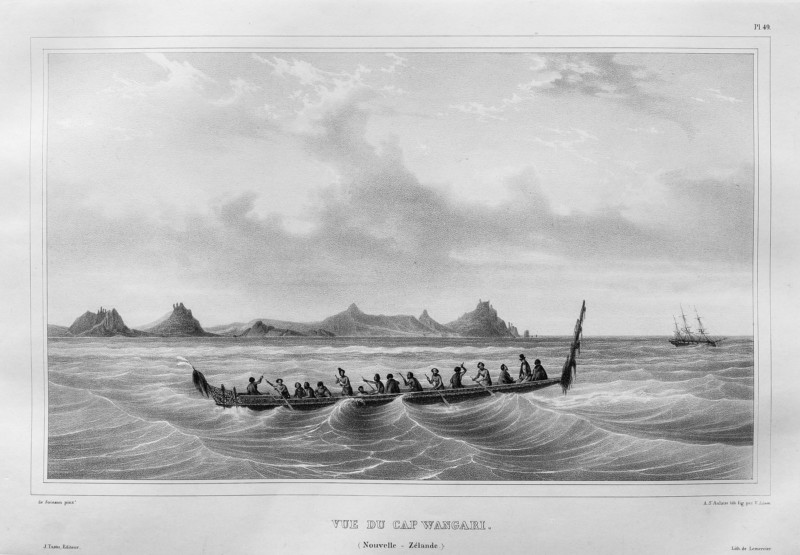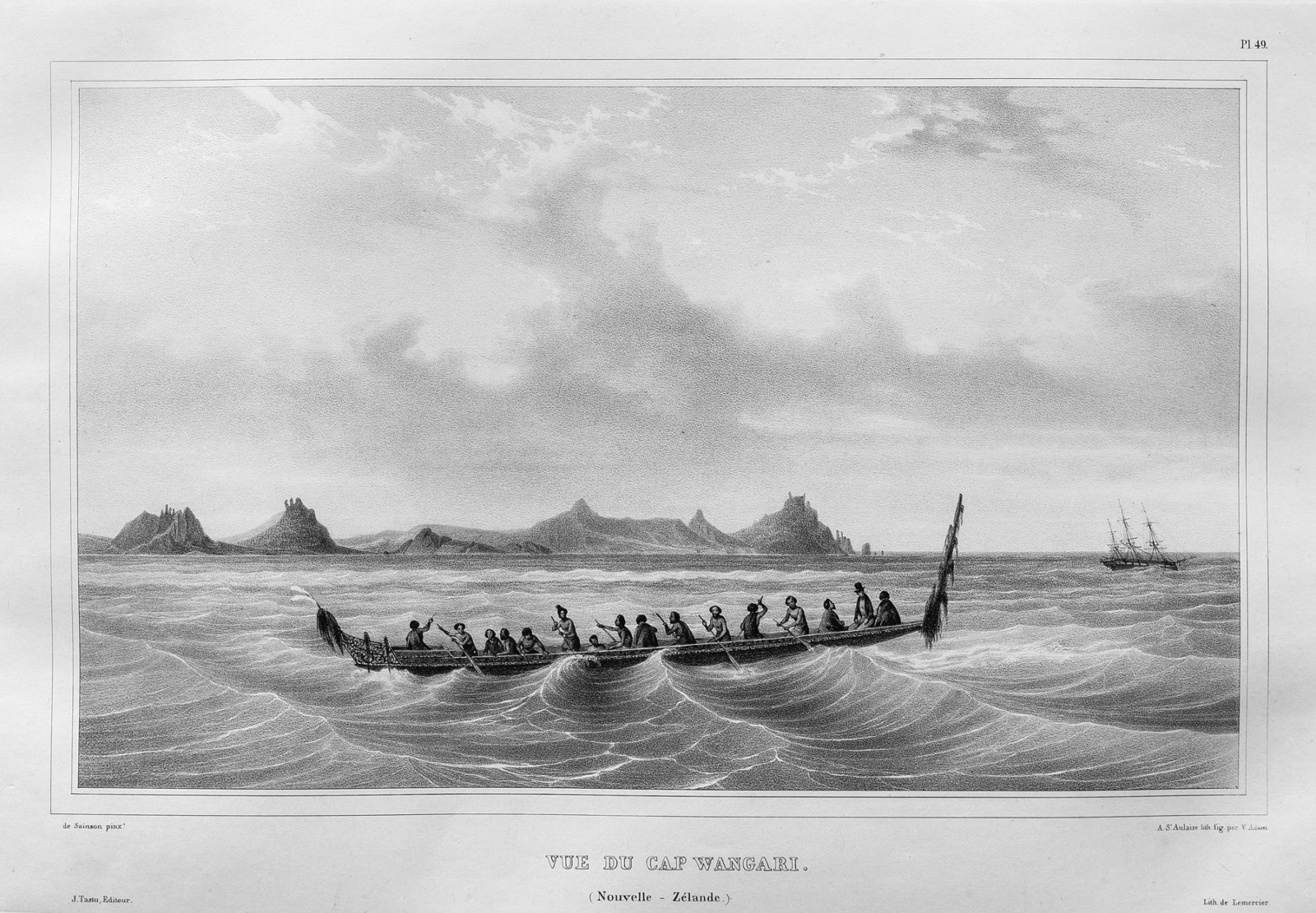DE SAINSON, Louis Auguste;
View of Cape Whangārei
1833
Lithograph on paper
206 x 342mm

Original title: ‘Vue du Cap Wangari (Nouvelle-Zélande)’. Lithographed by Félix-Achille de Saint-Aulaire. Plate No. 49 from Jules-Sébastien-César Dumont d’Urville, Voyage de la corvette l’Astrolabe exécuté pendant les années 1826–1827–1828–1829 (Paris: J. Tastu, 1833). Other lithographs from the series can be viewed here.
The following text comes from the catalogue for the exhibition Tirohanga Whānui.
On 21 February 1827, the Astrolabe was driven north by a black squall from the area between Aotea (Great Barrier Island) and Hauturu (Little Barrier Island). Here, d’Urville’s intention had been to correct Cook’s charting work, which ‘was again found to be unexact, and a new exploration became indispensable’.
The storm-driven current drove the ship so far that eventually the broken summits of Te Whara (Bream Head) and Tawiti Rahi (Poor Knights Islands) could be seen. It was hoped that the breeze would lead them to a sheltered anchorage at Whāngarei but at 4:30pm it fell leaving the ship becalmed at the east end of Taranga (Hen Island). As d’Urville wrote: ‘On its desert shores nothing but the monotonous sound of the breakers and the fearful cry of the sea-birds was heard.’
On the morning of the 22nd, heavy seas again threatened so shelter was urgently sought at the head of ‘Wangari Bay’ under Te Whara but this too proved impossible. Now the ship was obliged to anchor at the mouth of the bay in a place little sheltered from the rain, wind and heavy sea.
‘Nevertheless, it was not long before we distinguished a long war-canoe coming from the head of the bay, and approaching us, urged by all the vigour of those on board, for they managed their craft with extreme ability. One of those on board was dressed in English garments. I at first took him for some deserter among the Natives, the more so as he accosted the corvette without hesitation, mounted on board, and asked for the rangatira rahi (principal chief) and advanced towards me with a deliberate air. It was not until I heard him speak and examined his partly tattooed face nearer that I discovered he was in reality a Native.’
This was Rangituke, son of Te Koki, principal chief of Paihia, who d’Urville had visited four years earlier on Duperrey’s voyage. He can be clearly seen in top hat and suit sitting second from the right in the waka.
Perhaps this lithograph recalls the incident, re-siting it in the process and significantly improving the weather conditions.
Exhibition History
Tirohanga Whānui: Views from the Past, Te Kōngahu Museum of Waitangi, 15 April to 15 September 2017

